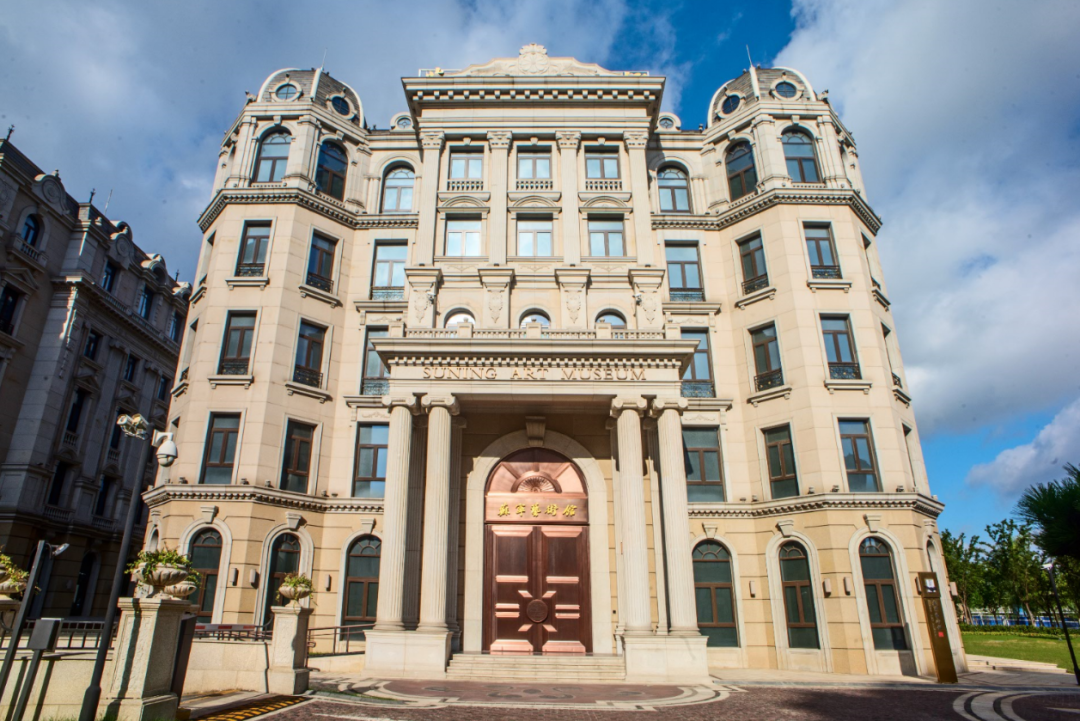
The century old building has finally restored its primitive style of a century ago.


In the process of repairing the fair faced brick wall of the North facade, the stone like cement coating covered on it in the later overhaul was stripped off with the lowest strength, and the fair faced brick wall of the tower in the middle of the North facade was seen again.
The building of Xujiahui Observatory, which is more than 140 years old, was built in 1873.

Compared with the style of 1910, after a year of data collection and sorting, the “century old meteorological observatory” began its overall repair and exhibition arrangement in 2014.
The wind measuring tower demolished in 1963 has become a difficulty in the repair and construction.
Antique meteorological relics are in the interactive meteorological studio.
Comparison of brick and wood anemometer tower changed into iron tower anemometer tower this small building exudes Roman architectural style from top to bottom.
Every detail is engraved with the traces of years.
In 1879, Shanghai was attacked by a strong typhoon, resulting in huge losses to ships at sea.
From 1893 to 1918, Lao Jixun studied the path of 620 typhoons along China’s coast and published the atmosphere of the Far East in 1900.
As nengs assistant, Lao Jixun became the director of Xujiahui Observatory in 1896.

This hand-painted picture makes people sigh.
Experts are specially invited to measure.



In the interactive experience space on the East and west sides of the ground floor, you can clearly see the exposed wooden columns, brick columns and concrete columns of different ages and forms.
Some window frames are made of red bricks into a corner stone shape, and the platform and outdoor stair railing are in the shape of a treasure bottle.
Tourists can also incarnate as weather forecasters and weather anchors to feel the daily work of real weather broadcasters; Here, you can also wear VR glasses to explore the tranquility in the eyes of the typhoon, feel the “storm” outside and walk into the magical South Pole.
The southeast and northwest above is the current southeast and northwest..
The large space on the East and west sides of the third floor presents the wooden roof truss in front of the visitors, but also retains the I-shaped steel beam reinforcement lattice structure under the roof truss.


In 2014, as part of Xujiahui Catholic historical building complex, the former site of Xujiahui Observatory was listed as a cultural relics protection unit in Shanghai.

The facade adopts gray fair faced brick wall and round arch window.
Based on the greatest respect for the historical style of the building, it is finally determined that the repair is compared with the style of 1910.

Comparing this hand-painted map with the satellite cloud map, it can be found that the difference between the two has been small.

Since 2016, the former site of Xujiahui Observatory reconstructed into Shanghai Meteorological Museum, as part of xujiahuiyuan scenic spot, is open to tourists free of charge within a limited time.
Today, let’s walk into the Shanghai Meteorological Museum (the former site of Xujiahui Observatory) to explore how people who only recorded on paper and pen 140 years ago captured the unpredictable tracks of typhoons.


What are the architectural stories about the hoisting of the wind tower? The Xujiahui Observatory is the first century climate station awarded to China by the World Meteorological Organization.

166 Puxi Road), that is, the main building of the former site of Xujiahui observatory.
In the more than 140 years since its construction in 1872, the meteorological observation records of Shanghai have never been interrupted, and it has become an indispensable observation point in the western scientific community in the Far East.
According to the calculation of the structural design, the height of the tower is about 18 meters and the net weight is about 11 tons.
Some wall bodies are decorated with teeth.
He established and improved the forecasting system, enabling Shanghai to have meteorological services for the first time.
It is located on the West Bank of Zhaojiabang, Xujiahui (now No.


In the article “father Lao” in Yang Jiang’s book “walking to the edge of life”, he described the astronomer as follows: “when I was a child, in addition to my relatives, my favorite person was father Lao…
This book has become a necessary book distributed by the French government to ships sailing in the Far East.

The facade is arranged in three sections, with three floors in the middle, the circular arch gate on the ground floor runs through the second floor, and there are rose windows and flat roof open-air balconies on the third floor.

Here, you can have a panoramic view of the history of meteorological development from 1872 to 2020, get in close contact with European antique meteorological relics in the 19th century, understand the latest advances in modern meteorological science and technology, and experience the magic of smart meteorology.
In 1876, nennes became the first director of Xujiahui observatory.
It plays music every minute and rings the bell when necessary to give time to the surrounding residents.
The floor of the main building is also equipped with a big clock presented by MartaI, Countess of barrymount, France.
When the new building was first built, a brick and wood wind tower with a top height of 40 meters was built in the center of the building, and a Beckley wind direction anemometer was installed.
His personal contribution to Typhoon Research “gave the observatory a scientific reputation for the first time”.

The 70 ton truck crane is used to hoist it in batches.
All the great masters who worked at the observatory were accomplished meteorologists in the world at that time, What precious records have they left us? Continuous meteorological records for a hundred years “on December 1, 1872, the minimum temperature in Xujiahui was 4.8 ℃ and the maximum temperature was 16.9 ℃.” These records left by the French missionary Gao Longkai in the observation log opened the chapter of meteorological observation records for hundreds of years.
Living in this satellite remote sensing era with frequent typhoon and lightning early warning, do you know? As early as the summer of 1879, the first typhoon warning in China was born in Xujiahui, an ancient and simple building surrounded by green shade.

With the exposed wooden grid ceiling after the removal of the ceiling, you can show the historical changes of the building.
His Shanghai dialect was a little foreign.” After years of repair and careful maintenance, the former site of Xujiahui Observatory is now transformed into Shanghai Meteorological Museum and open to the public.
In an age when human beings can’t overlook the earth from space, how powerful imagination it takes to draw the wind eye so accurately! The 32 azimuth compass enters the heavy gate of the museum from the second floor.
It also makes Shanghai the city with the most complete continuous meteorological observation data in China.
A century of changes, a century of continuous records.

Neng ENSS, the first director of Xujiahui Observatory, predicted the typhoon by analyzing the meteorological data of coastal lighthouse stations and surrounding stations, thus opening the prelude to China’s weather forecast.
Nennes wrote the paper Typhoon on July 31, 1879 by analyzing the meteorological data of coastal lighthouse stations and surrounding stations, which basically accurately drew the shape of the typhoon: spiral structure, air flow from outside to inside, and typhoon eyes in the center.
In 1879, Shanghai was hit by a strong typhoon.


Later, with the development of meteorological business, a new building was expanded on the east side of Xu Guangqi’s tomb (now No.
From 1908 to 1910, due to the bearing problem of the foundation, the brick and wood wind measuring tower higher than the main part was demolished and replaced with a 35 meter high tower, which was demolished in 1963.

Tower clock repair this repair retains the traces of historical transformation based on functional requirements, and maintains the structural components strengthened, replaced and added in the overhaul over the years.
“The Meteorological Observatory has advanced equipment, ‘where the vertical air flow is close to the wind, storm and other phenomena, there has never been anything lighter than letting go and no research’.” In 2005, the Shanghai Municipal People’s government announced that the former site of Xujiahui Observatory was an excellent historical building in Shanghai.
The window frame and under the window are decorated with red bricks.
The 32 azimuth compass is embedded on the ground.
Wall repair The fire stairs and various pipelines on the facade were also completely removed during the repair, the big clock face of the tower and the iron tower above the original clock tower were also restored, and the wooden doors and windows and wooden shutters on the facade recreated the charm of the past.
221 Puxi Road) and built into a five bay bungalow with a two-story platform.
Based on the principles of authenticity, reversibility and identifiability, the facade style of the original building has been protected and restored.

He gave me all my foreign things…
With the good start of nengs, the Xujiahui Observatory entered an era of vigorous development.







